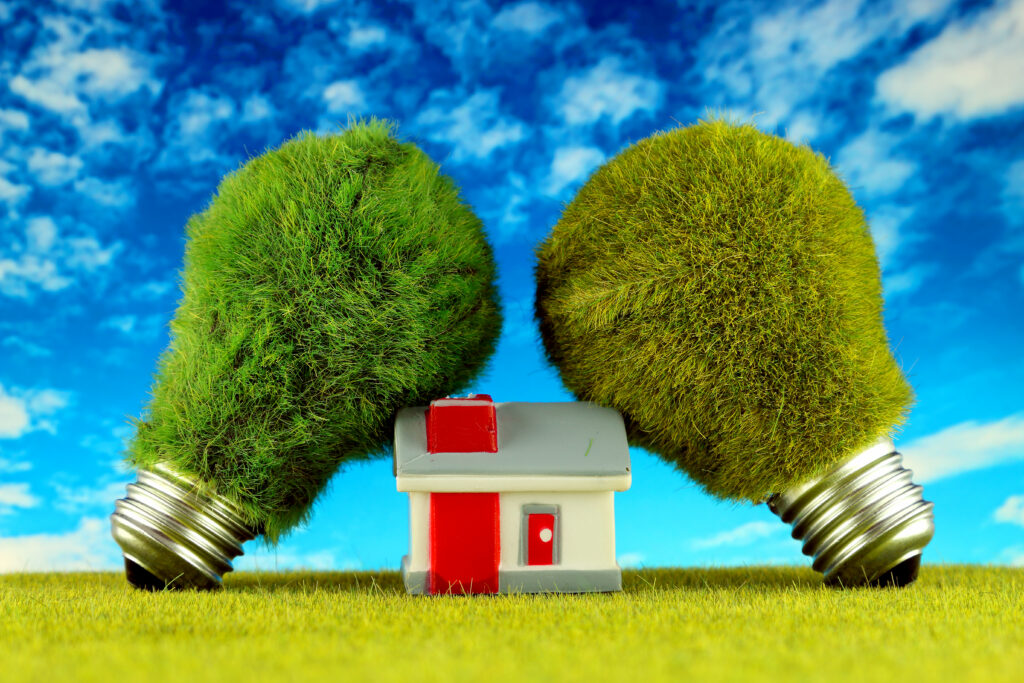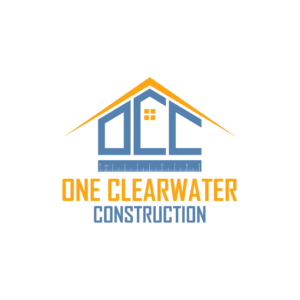What if your home could produce as much energy as it consumes? This is the promise of net-zero home design, a new way of living where your home not only meets your energy needs but also helps the environment. Imagine a house that keeps your energy bills low while supporting a greener future.
Net-zero homes are changing the way we think about sustainability. With the right design and energy-efficient systems, these homes generate as much energy as they use, often with renewable sources like solar power. Not only does this reduce your environmental footprint, but it also means you can save money in the long run.
As you continue reading, you’ll discover how net-zero home design can bring lasting benefits to your home and the planet.
Let’s dive into why this innovative approach is the future of housing.
Understanding Net-Zero Homes | A Step Towards Sustainable Living
Have you ever thought about how much energy your home uses and where it comes from? Let’s explore what makes a home truly energy-efficient.
What is a Net-Zero Home?
A net-zero home design refers to a residence that produces as much energy as it consumes over a year. This balance is achieved through a combination of energy-efficient construction and the use of renewable energy sources. The goal is to create a home that doesn’t rely on fossil fuels, reducing both energy costs and environmental impact.
Key Features of Net-Zero Homes
Energy-Efficient Design:
These energy-efficient homes are built to minimize energy loss. Features include airtight construction and high-quality insulation that keep the desired temperature stable without excessive heating or cooling.
Renewable Energy Sources:
Net-zero homes often incorporate renewable energy systems such as solar panels, wind turbines, or biomass heating. These systems generate clean energy on-site, contributing to the home’s energy independence.
High-Efficiency Components:
To maximize energy savings, these homes utilize efficient appliances and systems. This includes heat pumps for heating and cooling, energy-saving windows, and superior insulation materials.
Why Consider a Net-Zero Home Design?
Opting for a net-zero home offers several advantages:
- Environmental Impact: By generating your energy and reducing consumption, you contribute to a decrease in greenhouse gas emissions, supporting global efforts against climate change.
- Financial Savings: While the initial investment may be higher, the long-term savings on energy bills can be substantial. Additionally, some regions offer incentives or rebates for energy-efficient home designs.
- Energy Independence: Producing your energy provides stability against fluctuating utility rates and potential energy shortages.
Embracing a net-zero home design is more than just a trend; it’s a commitment to sustainable living that benefits both the environment and your wallet. By incorporating energy-efficient designs, renewable energy sources, and high-efficiency components, you can create a home.
Net-Zero Home Design | Smart Choice for Your Future
Are you tired of high electricity bills and feeling dependent on external energy sources? A net-zero home design could be the answer.
Let’s dive into why it’s a smart choice for your future.
1. Take Control of Your Power
In a typical home, you’re dependent on the grid for electricity. This means fluctuating utility rates, power outages, and reliance on non-renewable energy sources. But with net-zero home design, your home produces as much energy as it uses.
By installing solar panels, wind turbines, or other renewable energy systems, you can generate your own power.
How does this help?
- Lower electricity bills
- Energy security
With net-zero homes, you essentially free yourself from the grid, allowing you to control your energy needs while saving money.
2. A Smart Investment
Building a net-zero home may require a higher initial investment, but it’s a smart choice in the long run. The savings on your utility bills over the years can more than make up for the upfront cost.
Here’s how:
With solar panels or other renewable energy sources, you’re producing your energy, cutting down on electricity costs. Many states offer financial incentives for building energy-efficient homes, which can reduce the overall cost of building a net-zero home.
A study by the National Renewable Energy Laboratory found that homeowners can save up to 70% on energy bills in a net-zero home. Over time, these savings add up, making the initial investment worth it.
3. Eco-Friendly Living
When you opt for a net-zero home design, you’re not just saving money. You’re also making a positive impact on the environment. Traditional homes rely on fossil fuels to generate electricity, contributing to pollution and climate change. In contrast, a net-zero home uses clean energy from the sun, wind, or other renewable sources.
Why is this important?
- Lower carbon emissions
- Support sustainable living
This is more important than ever, as research shows that buildings contribute to about 40% of global energy consumption and carbon emissions. By building a net-zero home, you’re directly reducing this impact and supporting the global movement towards cleaner energy.
4. Healthier Home Environment
In addition to energy savings and environmental benefits, net-zero homes provide a healthier environment for you and your family. Traditional homes often have poor indoor air quality due to outdated HVAC systems, poor ventilation, and moisture problems. But net-zero homes are built with high-performance air systems and better insulation, which improves indoor air quality.
Here’s how it helps:
- Better ventilation
- Reduced allergens
You’ll breathe easier knowing that your home not only saves you money but also provides a healthier space for your family to live.
Design Secrets to Build Your Own Net-Zero Home
Building a net-zero home design is not just about adding solar panels or switching to energy-efficient appliances—it’s about creating a space that works with the environment. Every detail, from the materials you choose to the systems you install, plays a role in how energy-efficient your home will be.
Let’s explore some key design secrets that will make your home truly energy-efficient and sustainable.
Adapting to Climate
Have you thought about how your local climate affects your home’s energy needs? The climate plays a huge role in designing a net-zero home design because it influences how much energy you’ll need for heating, cooling, and ventilation.
- Warm Climates: If you live in a hot climate, you’ll want to focus on shading and cooling. Installing awnings, and overhangs, and choosing light-coloured roofing materials can keep your home cool without using energy-draining air conditioning.
- Cold Climates: In colder areas, energy efficiency is all about insulation and heat retention. Adding thick insulation to the walls and roof and using airtight seals for windows and doors can help keep the warm air inside.
By understanding your climate, you can adjust the design to make your net-zero home design more effective, saving energy and money.
Building Smart from the Ground Up
A solid foundation for your net-zero home design begins with the structure itself. Insulation is one of the most important aspects to consider when building a home that uses minimal energy.
- Thermal Mass: Certain materials, like concrete and stone, can absorb and store heat during the day, releasing it at night. This helps regulate the temperature inside, reducing the need for heating and cooling systems.
- Airtight Building Envelopes: Ensuring that your home is tightly sealed is critical. Gaps or leaks around windows, doors, and floors allow heated or cooled air to escape. Proper sealing can dramatically increase your home’s efficiency.
These building techniques make sure your net-zero home design doesn’t waste energy on keeping the temperature stable, allowing you to rely less on external energy sources.
Perfecting Your Windows and Doors
Do you know how much heat can escape through your windows? The right windows and doors are key to keeping your net-zero home design energy-efficient.
- Window Placement: Place windows on the side of your home that get the most natural light. In colder climates, maximize southern-facing windows to capture the sun’s warmth. In warmer climates, minimize windows on the side that faces the sun.
- Materials: Double or triple-glazed windows are a must for energy efficiency. Low-emissivity (Low-E) glass helps reduce heat loss in winter and keeps your home cooler in summer.
- Doors: Look for energy-efficient doors made from insulated materials, such as fibreglass or steel. Properly sealing doors also prevents energy loss.
By selecting the right windows and doors, you can enhance the overall energy efficiency of your net-zero home design.
Energy-Efficient Systems
To create a truly net-zero home design, choosing the right systems to heat, cool, and power your home is essential.
- Heat Pumps: These are highly efficient systems that provide both heating and cooling. They work by transferring heat from one place to another instead of generating it, saving a lot of energy.
- Water Heaters: Consider a high-efficiency water heater, such as a tankless water heater or a solar water heater, to minimize energy use for hot water.
- LED Lighting: Replace traditional bulbs with energy-efficient LED lighting to reduce electricity consumption.
These systems work together to make your net-zero home design highly efficient, providing comfort without sacrificing energy savings.
Budgeting for a Green Home
Investing in a net-zero home design may cost more upfront, but the long-term benefits are well worth it. Not only will you save on energy bills, but there are also financial incentives for sustainable building.
- Tax Incentives: Many states offer tax credits or rebates for building energy-efficient homes. These can help offset the initial investment.
- Energy Savings: Once your home is up and running, your monthly energy bills will be significantly lower. Many homeowners see savings of 50% or more compared to traditional homes.
- Increased Home Value: Energy-efficient homes are becoming increasingly popular, and many buyers are willing to pay more for a home that’s already net zero. This could mean a higher resale value in the future.
By budgeting wisely for energy-efficient systems and materials, you’ll be able to recoup your investment and enjoy long-term savings.
OneClearwaterConstruction’s Approach
While One Clearwater Construction (OCC) may not specialize in full net-zero home design builds, we are committed to making homes more energy-efficient through our renovation services. Our goal is to help homeowners create comfortable, functional spaces that also reduce long-term energy costs.
How We Make Homes More Sustainable
At OCC, we focus on integrating practical, energy-efficient solutions into every renovation project, including:
~ We install windows that help to improve insulation and prevent heat loss, enhancing your home’s energy efficiency.
~ Proper insulation is essential in reducing energy consumption. Our team ensures that your home is sealed efficiently, helping maintain consistent indoor temperatures and lower heating and cooling costs.
~ In each renovation, we aim to improve the energy efficiency of the installed systems, from lighting and appliances to plumbing and HVAC systems.
OCC is dedicated to helping homeowners reduce their energy footprint. Whether it’s through adding energy-efficient windows or upgrading insulation, we provide expert guidance on how to enhance your home’s sustainability. Our renovations are designed not just for beauty and function, but also to ensure your home is more energy-efficient for the long haul.
Wrapping Things Up!
Net-zero home design offers numerous benefits, including significant cost savings, a reduced environmental impact, and an overall improvement in living quality. By reducing your reliance on external energy sources and using sustainable materials, you not only cut down on your utility bills but also contribute to a healthier planet.
While building a full net-zero home may require specialized expertise, even small steps toward energy efficiency in your current or future home can make a big difference.
Let’s Connect!
Want a free quote? Let professionals like OneClearwaterConstruction guide you toward smarter, more energy-efficient solutions.


